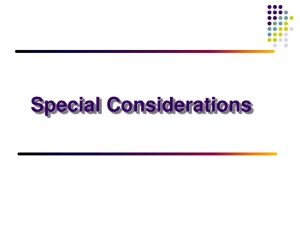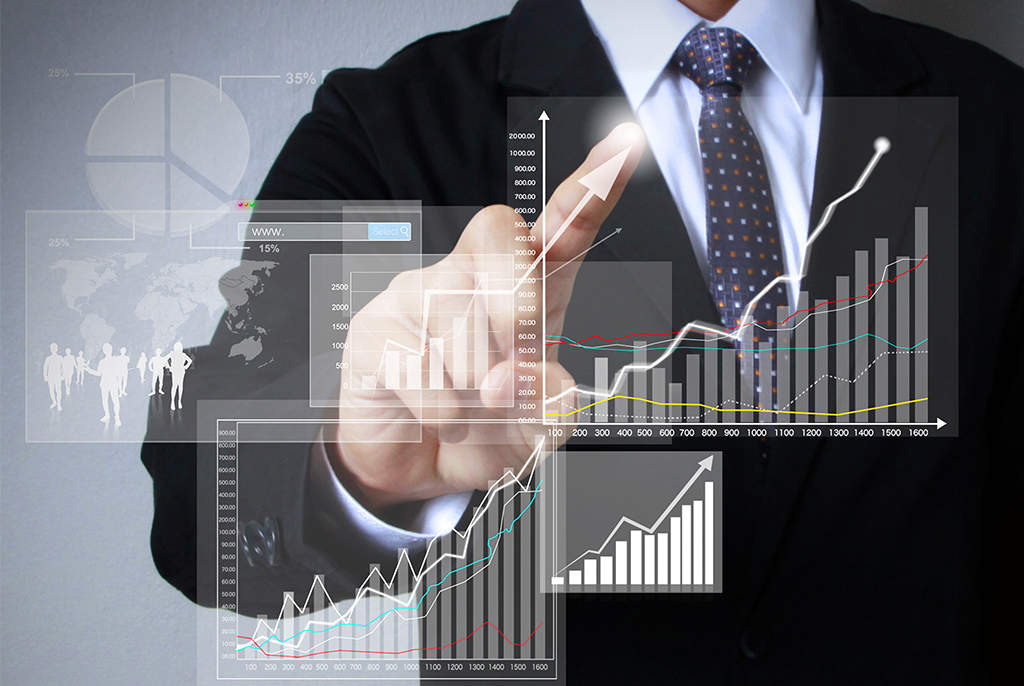Have you ever wondered what an economic cycle is? If so, you’re not alone, because most people aren’t even aware that the economy goes through periodic cycles. If you want to understand your financial options better and know how to make the best decisions, knowing what an economic cycle is will help you make wise financial decisions. This article covers what an economic cycle is and how it can affect you and your family.
What Is an Economic Cycle?

Economies go through cycles. This means that they are usually either expanding or contracting. In the expansion stage, businesses and consumers feel more confident in spending money and this leads to increased economic activity. Conversely, during a contraction, less spending leads to a decrease in economic activity. Economists measure these cycles with the Gross Domestic Product (GDP). The GDP is an estimate of all the goods and services produced within one country’s borders, whether it be from exports or from local production for domestic consumption. A rising GDP indicates that an economy is expanding and vice versa. When an economy is expanding, unemployment typically falls due to a need for more workers to meet demand.
How the Economic Cycle Works
The economic cycle is a term that describes the natural ups and downs of the economy. The economic cycle is an important factor to consider when making long-term financial decisions, such as buying a house or investing in the stock market. In general, there are four phases of the economic cycle: expansion, peak, contraction and trough. Companies are often affected by the economic cycle because they have different resources depending on which phase they’re in. For example, during an expansion phase companies typically have more resources than during a recessionary period. Understanding how the economic cycle works can help you make better decisions about your finances and how to handle your own money for stability over time.
Special Considerations

As a homeowner, you need to take into account that every economic cycle will go through low and high points. While things may seem rosy now, it’s important to have a plan in place should the economy weaken. Experts suggest a diverse range of strategies to manage your portfolio so that you are well-positioned for each type of economic environment. This is why it is important to talk with your broker or adviser about this type of thing at least once a year or as often as needed. Most mortgage lenders will even offer special consideration mortgages which can help protect borrowers against mortgage insurance increases or higher interest rates that happen during an economic downturn.
Managing Economic Cycles
A lot of people have a lot of opinions about what makes an economy work. Some believe in regulation, others believe in laissez-faire and some don’t know or care to comment. As it turns out, all three ideas matter because each has a different impact on the economy. That’s the gist of managing economic cycles–finding a balance among the three main approaches for keeping things on track. In this post, we’ll take a look at how each one affects us. The best thing you can do is be aware of the pitfalls and the advantages so you can be prepared. For example, during recessions when businesses are struggling, many small companies that depend on bigger businesses for orders go under as well (many times being forced into bankruptcy). The larger company might feel like it can wait but small business owners are often faced with a choice between going bankrupt themselves or declaring bankruptcy and moving to another business area. For more information read Managing Economic Cycles: What Is An Economic Cycle?
Analyzing Economic Cycles
In order to analyze economic cycles, it is important to understand what they are. There are two economic cycles: the business cycle and the Kondratiev wave. The business cycle has a much shorter timeframe of five years while the Kondratiev wave can last anywhere from forty to fifty years. In order to analyze economic cycles, it is important not only to know their differences but also their similarities. For example, both start with an expansion phase where businesses have more customers and there is a greater demand for products or services as well as a decrease in unemployment rates. This increase in demand will also lead to inflation rates rising. At some point during these expansions, there will be a peak where everything starts slowing down and businesses start reducing inventories due to less demand for products or services.
Monetarism

Monetarists believe that if you print more money than what’s necessary, this will cause an increase in prices, which will then lead to an increase in unemployment and a decrease in production. Conversely, if there’s less money than what’s needed, this will lead to a decrease in prices, which will then lead to higher employment and production. The difference between the two is how much can be created with the same amount of goods, labor and services. There are three different types of monetarism: balanced monetarist, conventional monetarist and Keynesian monetarist.
Keynesian Economics
The most widely known and influential economic theory is Keynesian Economics. The theory was created by John Maynard Keynes in the 1930s, though he did not publish his work until 1936. Keynesian economics relies on demand-side management to achieve its goals of growth, and it’s often called a demand-side approach because it aims to influence the aggregate demand for goods and services. In contrast, supply-side economists focus on increasing the production of goods and services which will result in increased supply. While Keynesian economics does have some critics who argue that it leads to higher levels of inflation, an increase in government debt, or even economic stagnation over time
Kahneman observed that this choice architecture technique can be used to bring about desired behavior changes if they are backed up by careful psychological research into people’s understanding of different choices and how they think they might affect them. One example where choice architecture is being applied with apparent success is that many public health experts believe that graphic warning labels with messages such as smoking causes fatal lung cancer reduce cigarette consumption among smokers when placed on cigarette packages next to the brand name written in large letters.
Austrian Economists
Economic cycles are a concept created by Austrian economists. The theory is that the economy moves in long cycles through periods of prosperity and recession, with the length of the cycle being determined by the growth rate of credit. In other words, when credit grows faster than the economy, a boom occurs and when credit grows slower than the economy, a recession occurs. This also means that recessions are not an unfortunate random event but rather a necessary part of an economic cycle.
Inflationary booms create bubbles in asset prices which will eventually burst to cause economic recessions while deflationary busts cause depression-like conditions leading to reduced production and increased unemployment rates.
How Do You Define an Economic Cycle?
An economic cycle is the ups and downs of a country’s economy. How do you define an economic cycle? There are numerous explanations, but economists typically look at how many new jobs are being created each month and how the unemployment rate is changing. Recessions happen when these indicators start moving in the wrong direction and reach a low point, while a recovery happens when they start to move in the right direction again.
This article is complemented by an insightful YouTube video titled “Y1 6) The Economic Cycle (Business Cycle) – Stages, Characteristics and Causes.” The video is hosted on YouTube by an informative channel that provides valuable knowledge on economic cycles. We would like to extend our appreciation to the content creator for their expertise in explaining the economic cycle and its impact.
Conclusion
In conclusion, an economic cycle is a period of time where the economy grows and shrinks. This growth and shrinkage of the economy is what creates fluctuations in both employment rates and business profits. These fluctuations can be seen as a good thing because they allow for people to create businesses that will better suit their needs. However, because these cycles can change at any moment, it’s important to always have money on hand just in case.
In conclusion, although an economic cycle may seem negative there are actually many positives associated with them. They often provide more opportunity for new businesses and new jobs while also forcing certain companies out of existence. With all these upsides there are still a few drawbacks such as unemployment during recessions, though these are mild compared to other effects like war or natural disasters.
